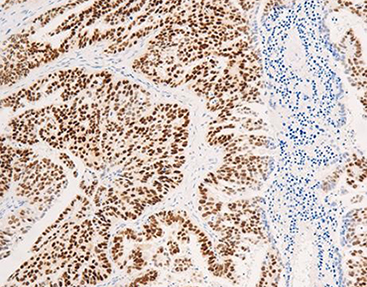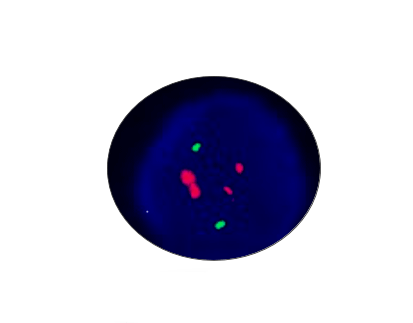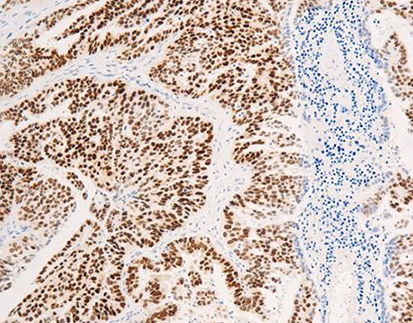Understanding ER-Positive Breast Cancer: What You Need to Know

By admin
Treatment Options for ER Positive Cancer
Hormone Therapy
Hormone therapy stands as a cornerstone treatment for ER-positive breast cancer. By targeting the hormone receptor pathways, these therapies aim to disrupt the link between estrogen and cancer cell proliferation.
Types of Hormone Therapies
There are various types of hormone therapies employed to treat ER-positive breast cancer. Selective estrogen receptor modulators (SERMs) like tamoxifen work by blocking estrogen receptors on breast cancer cells. Aromatase inhibitors (AIs), such as letrozole, anastrozole, and exemestane, reduce estrogen levels by hindering the enzyme aromatase, which converts androgens into estrogen. Fulvestrant, a selective estrogen receptor degrader (SERD), binds to estrogen receptors and degrades them.
Benefits and Limitations
Hormone therapy offers significant benefits, including reducing recurrence rates and improving survival outcomes. It is particularly effective in early stages or as adjuvant therapy following surgery. However, like all treatments, it comes with limitations. Resistance to hormone therapy can develop, rendering the treatment less effective over time. Additionally, side effects such as hot flashes, bone loss, and cardiovascular issues may emerge, requiring careful management by healthcare providers.
Chemotherapy
Chemotherapy is another crucial component in the treatment paradigm for ER-positive breast cancer, especially in cases where the cancer is aggressive or has spread beyond the breast and lymph nodes.
When is Chemotherapy Recommended?
Chemotherapy is typically recommended when there is a high risk of recurrence or when the tumor is particularly large or aggressive. It’s also indicated in cases where the cancer has metastasized or in patients who have not responded to hormone therapy alone. The decision to use chemotherapy is made after assessing multiple factors, including the patient’s overall health, the cancer’s characteristics, and the risk of disease progression.
Combination with Hormone Therapy
Often, chemotherapy is combined with hormone therapy to maximize treatment efficacy. This approach is based on disrupting cancer cell growth through different mechanisms. Chemotherapy kills fast-growing cancer cells, while hormone therapy specifically targets estrogen-driven growth. The combined regimen can improve patient outcomes but may also increase the complexity of managing side effects and ensuring patient adherence to treatment plans.
Targeted Therapy
Targeted therapies revolutionize the treatment for ER-positive breast cancer by focusing on specific molecular targets involved in cancer development and progression.
Commonly Used Targeted Drugs
Commonly used targeted drugs include CDK4/6 inhibitors like palbociclib, ribociclib, and abemaciclib. These drugs work by inhibiting proteins essential for cell cycle progression, thereby preventing cancer cell division and growth. Another targeted therapy option is everolimus, an mTOR inhibitor that blocks a key pathway in cancer cell metabolism and survival.
How Targeted Therapy Works
Targeted therapies offer a precision approach by attacking specific molecules involved in cancer cell growth and survival. Unlike traditional chemotherapy, which affects all rapidly dividing cells, targeted therapies aim to minimize damage to normal cells, thus reducing side effects. They often work in combination with hormone therapies to enhance their effectiveness, particularly in patients who have shown resistance to hormone treatments alone.
Prognosis and Survival Rates
Factors Influencing Prognosis
Multiple factors influence the prognosis of a patient with ER-positive breast cancer, significantly affecting their treatment plan and expected outcomes.
Tumor Size and Grade
The size and grade of the tumor are critical in determining prognosis. Smaller, well-differentiated tumors (lower grade) generally predict a better outcome compared to larger, poorly differentiated tumors (higher grade). The tumor grade indicates how much the cancer cells resemble normal cells, with higher-grade tumors often being more aggressive and harder to treat.
Lymph Node Involvement
Lymph node involvement also plays a vital role in influencing prognosis. The presence of cancer cells in the lymph nodes often suggests a higher likelihood of spread and recurrence. More extensive lymph node involvement usually correlates with a poorer prognosis and necessitates a more aggressive treatment approach.
Understanding Survival Rates for ER Positive Cancer Patients
Survival rates for ER-positive breast cancer patients have improved significantly due to advancements in early detection and treatment options. The five-year survival rate for localized ER-positive breast cancer is exceedingly high, often exceeding 90%. However, survival rates can vary based on factors such as the stage at diagnosis, patient’s age, overall health, and specific tumor characteristics. Continuous monitoring and follow-up care are essential to address any recurrence and manage treatment side effects.
Lifestyle Adjustments and Support for Patients
Dietary Recommendations
Adopting a balanced diet can support treatment outcomes and enhance overall well-being in patients diagnosed with ER-positive breast cancer. Emphasizing a diet rich in fruits, vegetables, lean proteins, and whole grains can help maintain strength and immunity. Limiting alcohol intake and avoiding processed foods are also advised to reduce cancer risks and improve recovery rates. Consulting with a nutritionist can provide personalized dietary plans tailored to individual health needs and treatment schedules.
Emotional and Mental Health Support
The psychological impact of an ER-positive breast cancer diagnosis and subsequent treatments can be profound. Access to emotional and mental health support is crucial in providing holistic care. This can include counseling services, support groups, and stress-reduction techniques such as mindfulness and meditation. Fostering a strong support network of family and friends also contributes significantly to coping with the emotional challenges of breast cancer.
Current Research and Future Directions
New Drug Developments
Ongoing research continues to advance the treatment landscape for ER-positive breast cancer. New drug developments are focusing on overcoming resistance to existing therapies and providing more effective treatment options with fewer side effects. Innovations include next-generation hormone therapies, novel targeted agents, and combination therapies that aim to tackle multiple pathways involved in cancer progression simultaneously.
Clinical Trials in Progress
Clinical trials play a pivotal role in evaluating new treatments and improving existing ones. Patients with ER-positive breast cancer may consider participating in clinical trials to access cutting-edge therapies and contribute to advancing medical knowledge. Current trials are exploring various approaches, including immunotherapy, novel drug combinations, and personalized medicine strategies that tailor treatments based on individual genetic profiles. Participation in clinical trials should be discussed thoroughly with healthcare providers to weigh potential benefits and risks.
By understanding what ER-positive means in cancer, we can better appreciate the complexity of its detection, diagnosis, and treatment. Detailed insights into hormone therapy, chemotherapy, and targeted therapy illuminate the tailored approaches available to combat this specific breast cancer subtype. Awareness of prognosis factors, lifestyle adjustments, and ongoing research offers hope and direction for patients navigating their journey with ER-positive breast cancer.
Celnovte
Celnovte‘s ER (Estrogen Receptor) primary antibody is a high-quality product developed through their robust research and development platform, which specializes in IVD-grade immunohistochemistry primary antibodies. Utilizing hybridoma cell fusion technology, Celnovte has successfully created monoclonal antibody-producing cell lines that secrete antibodies with exceptional specificity and sensitivity. The ER antibody is one of the nearly 80 antibodies developed by the company, and it stands out for its clinical relevance in guiding treatment plans.
The ER antibody has undergone rigorous quality control evaluations, including the NordiQC quality control assessment, ensuring its reliability and consistency in diagnostic applications. In 2022, it achieved a significant milestone by obtaining the Class I registration certificate approved by the NMPA, which is a testament to its high standard and compliance with regulatory requirements.
Celnovte’s antibody engineering expression platform further enhances the ER antibody’s quality by ensuring good repeatability, minimal batch-to-batch differences, and high yield. This platform supports the engineering transformation of murine hybridoma cell lines, leading to the production of murine/rabbit engineered antibodies. Besides, all kinds of primary antibodies are provided by Celnovte to consumers in need.











